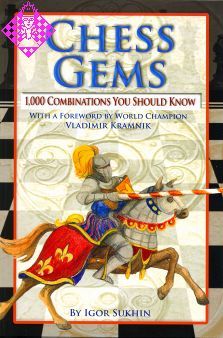Artikelnummer
LMSUKCG
Autor
Chess Gems
1.000 Combinations you should know
335 Seiten, kartoniert, Mongoose, 1. Auflage 2007
Final vergriffen
Combinations have long been considered the most creative aspect of chess. From the vast sea of chess games a thousand combinations have been chosen: the most artistic, elegant and famous. Yet chess tactics are not only for aesthetic enjoyment: they help win games.
This book will expand your chess horizon and help you to
·See how chess combinations have evolved over the last 1,000 years
·Learn to recognize tactical patterns from real-life examples
·Improve your chances of finishing off your opponent with a tactical blow
·Find combinations missed by Grandmasters
Chess Gems is certain to sharpen your knowledge of both tactics and chess history
____________________________________________________
Preface
The book you have in your hands contains more than 1,000 combinations from games played over the last two millennia. Many are classics, an important part of chess educafor beginners and intermediate players. Some examples, like Anderssen-Kieseritsky, are so famous that practically any chess player has seen them. Yet there are many more. Huge chunks of chess history from the nineteenth century are omitted from textbooks. This book was designed to fill the gap. While it is hard to determine which games are the most famous, let alone the best, Chess Gems contains many beautiful combinations that have amazed and delighted chess fans.
When amateurs talk about sharp combinative play, they often refer to the greats of the past: Anderssen, Morphy, Chigorin, etc. Others have more contemporary heroes: Tal or Fischer. Many people from my generation could be called "Tal's children". I grew up on his games; in my childhood I tried to copy his style. There is a perception that today somehow professional chess has become dry and boring.
The way chess is played at the top level has changed quite a bit in the last few years. There are a lot more tactics involved, and the positions are much more complicated - that's not a coincidence. Nowadays, thanks to computers, to get an advantage out of the opening, one has to go for complicated positions. It is much harder to win a game without taking risks; one cannot just slowly grind down an opponent, "playing for two possible outwin or draw. A lot of recent wins at high-level tournaments are achieved through enormous complications and tactics. In fact, in a future edition of this book covering the twenty-first century, I am sure quite a few recent games will be worth including.
No discussion of recent changes in chess can ignore the elephant in the room: computHere I want to dispel a popular myth: computers will make (or have already made) "human" chess less popular.
Cars can go much faster than the 100-meter world record holder, and farther than the best marathoner. Yet that hasn't diminished interest in track and field. If anything, commake chess more accessible to a broad circle of chess fans. They allow amateurs to spot errors of top professionals in real time, to explore all sorts of "what-if' scenarios, and to provide an instant (though imperfect) assessment of the game being played. One cannot ignore the benefits of training with a chess program at all levels. All in all, while computers make the life of a chess professional harder, their overall contribution to the game is positive.
I suppose one can distinguish between "computer chess" and "human chess." Playcomputer chess (really the only way to play against a computer nowadays) involves watching extremely carefully for your own mistakes. There is no psychology involved, no tactics based on intuition. One small error will bring your demise at the hands of the "silicon monster"; whereas against a human opponent, a mistake occasionally results in an interesting and entertaining twist. To me, chess has always been about competition between two people, with all their human emotions and blunders. Not surprisingly, only human games bring about spectacular intuitive sacrifices and memorable combinations. One thing is clear: for as long as people play chess, for as long as there is appreciation of art, beauty, and logic, this book will not become obsolete.
Vladimir Kramnik May 2007
This book will expand your chess horizon and help you to
·See how chess combinations have evolved over the last 1,000 years
·Learn to recognize tactical patterns from real-life examples
·Improve your chances of finishing off your opponent with a tactical blow
·Find combinations missed by Grandmasters
Chess Gems is certain to sharpen your knowledge of both tactics and chess history
____________________________________________________
Preface
The book you have in your hands contains more than 1,000 combinations from games played over the last two millennia. Many are classics, an important part of chess educafor beginners and intermediate players. Some examples, like Anderssen-Kieseritsky, are so famous that practically any chess player has seen them. Yet there are many more. Huge chunks of chess history from the nineteenth century are omitted from textbooks. This book was designed to fill the gap. While it is hard to determine which games are the most famous, let alone the best, Chess Gems contains many beautiful combinations that have amazed and delighted chess fans.
When amateurs talk about sharp combinative play, they often refer to the greats of the past: Anderssen, Morphy, Chigorin, etc. Others have more contemporary heroes: Tal or Fischer. Many people from my generation could be called "Tal's children". I grew up on his games; in my childhood I tried to copy his style. There is a perception that today somehow professional chess has become dry and boring.
The way chess is played at the top level has changed quite a bit in the last few years. There are a lot more tactics involved, and the positions are much more complicated - that's not a coincidence. Nowadays, thanks to computers, to get an advantage out of the opening, one has to go for complicated positions. It is much harder to win a game without taking risks; one cannot just slowly grind down an opponent, "playing for two possible outwin or draw. A lot of recent wins at high-level tournaments are achieved through enormous complications and tactics. In fact, in a future edition of this book covering the twenty-first century, I am sure quite a few recent games will be worth including.
No discussion of recent changes in chess can ignore the elephant in the room: computHere I want to dispel a popular myth: computers will make (or have already made) "human" chess less popular.
Cars can go much faster than the 100-meter world record holder, and farther than the best marathoner. Yet that hasn't diminished interest in track and field. If anything, commake chess more accessible to a broad circle of chess fans. They allow amateurs to spot errors of top professionals in real time, to explore all sorts of "what-if' scenarios, and to provide an instant (though imperfect) assessment of the game being played. One cannot ignore the benefits of training with a chess program at all levels. All in all, while computers make the life of a chess professional harder, their overall contribution to the game is positive.
I suppose one can distinguish between "computer chess" and "human chess." Playcomputer chess (really the only way to play against a computer nowadays) involves watching extremely carefully for your own mistakes. There is no psychology involved, no tactics based on intuition. One small error will bring your demise at the hands of the "silicon monster"; whereas against a human opponent, a mistake occasionally results in an interesting and entertaining twist. To me, chess has always been about competition between two people, with all their human emotions and blunders. Not surprisingly, only human games bring about spectacular intuitive sacrifices and memorable combinations. One thing is clear: for as long as people play chess, for as long as there is appreciation of art, beauty, and logic, this book will not become obsolete.
Vladimir Kramnik May 2007
| EAN | 9780979148255 |
|---|---|
| Gewicht | 500 g |
| Hersteller | Mongoose |
| Breite | 15,2 cm |
| Höhe | 22,8 cm |
| Medium | Buch |
| Erscheinungsjahr | 2007 |
| Autor | Igor Sukhin |
| Sprache | Englisch |
| Auflage | 1 |
| ISBN-13 | 9780979148255 |
| Seiten | 335 |
| Einband | kartoniert |
005 Bibliography
007 Preface by World champion Kramnik
008 Introduction
010 1 According to the Rules of Shatranj (ninth - fifteenth centuries)
014 How Would You Play?
014 Solutions
015 2 From Lucena to Greco (fifteenth - seventeenth centuries)
021 How Would You Play?
023 Solutions
026 3 From Stamma to Philidor (Eighteenth Century)
031 How Would You Play?
035 Solutions
038 4 From Napoleon to Staunton (the first half of the nineteenth century)
051 How Would You Play?
060 Solutions
065 5 AnderssenandMorphy (1851 -1860)
076 How Would You Play?
085 Solutions
090 6 First Unofficial World Championship Match (1861-1870)
093 How Would You Play?
101 Solutions
105 7ZukertortandChigorin(1871-1880)
110 How Would You Play?
119 Solutions
123 8 Steinitz - The First World Champion (1881-1890)
132 How Would You Play?
144 Solutions
150 9 Lasker and Pillsbury (1891 - 1900)
162 How Would You Play?
182 Solutions
191 10 Matches of the Second World Champion (1901-1920)
197 How Would You Play?
214 Solutions
222 11 Capablanca, Alekhine, Euwe (1921 - 1940)
229 How Would You Play?
247 Solutions
255 12 Botvinnik, Smyslov, Tal (1941 -1960)
259 How Would You Play?
271 Solutions
277 13 Petrosian, Spassky, Fischer (1961 - 1980)
282 How Would You Play?
298 Solutions
305 14 The Great Opposition: Karpov-Kasparov (1981 - 2000)
312 How Would You Play?
322 Solutions
329 Index of Players
007 Preface by World champion Kramnik
008 Introduction
010 1 According to the Rules of Shatranj (ninth - fifteenth centuries)
014 How Would You Play?
014 Solutions
015 2 From Lucena to Greco (fifteenth - seventeenth centuries)
021 How Would You Play?
023 Solutions
026 3 From Stamma to Philidor (Eighteenth Century)
031 How Would You Play?
035 Solutions
038 4 From Napoleon to Staunton (the first half of the nineteenth century)
051 How Would You Play?
060 Solutions
065 5 AnderssenandMorphy (1851 -1860)
076 How Would You Play?
085 Solutions
090 6 First Unofficial World Championship Match (1861-1870)
093 How Would You Play?
101 Solutions
105 7ZukertortandChigorin(1871-1880)
110 How Would You Play?
119 Solutions
123 8 Steinitz - The First World Champion (1881-1890)
132 How Would You Play?
144 Solutions
150 9 Lasker and Pillsbury (1891 - 1900)
162 How Would You Play?
182 Solutions
191 10 Matches of the Second World Champion (1901-1920)
197 How Would You Play?
214 Solutions
222 11 Capablanca, Alekhine, Euwe (1921 - 1940)
229 How Would You Play?
247 Solutions
255 12 Botvinnik, Smyslov, Tal (1941 -1960)
259 How Would You Play?
271 Solutions
277 13 Petrosian, Spassky, Fischer (1961 - 1980)
282 How Would You Play?
298 Solutions
305 14 The Great Opposition: Karpov-Kasparov (1981 - 2000)
312 How Would You Play?
322 Solutions
329 Index of Players
Mehr von Mongoose
-
 Chess Camp Vol. 79,95 €
Chess Camp Vol. 79,95 € -
 Chess Camp Vol. 29,95 €
Chess Camp Vol. 29,95 € -
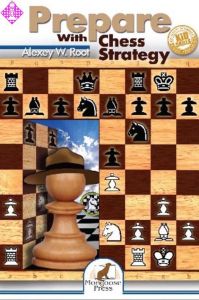 Prepare with Chess Strategy12,95 €
Prepare with Chess Strategy12,95 € -
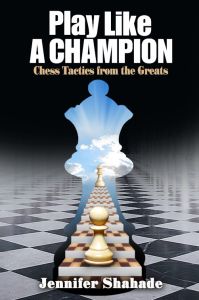 Play Like A Champion24,50 €
Play Like A Champion24,50 € -
 Chess Camp Vol. 69,95 €
Chess Camp Vol. 69,95 € -
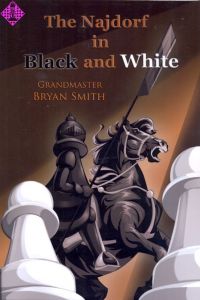 The Najdorf in Black and White21,95 €
The Najdorf in Black and White21,95 € -
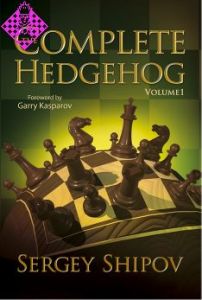 The Complete Hedgehog Vol. 129,95 €
The Complete Hedgehog Vol. 129,95 € - Mehr von Mongoose

